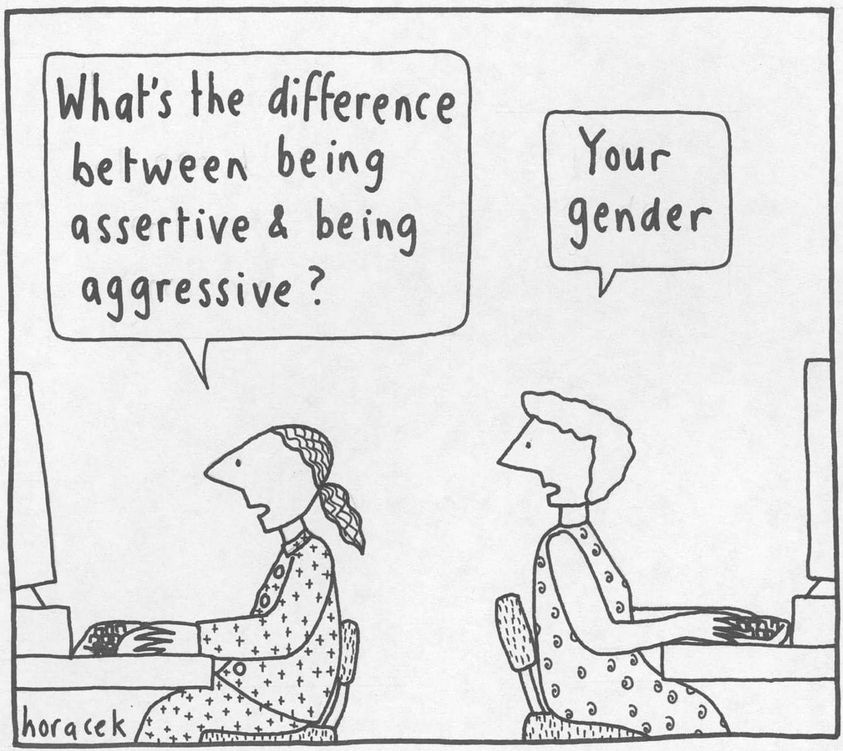The Assertiveness Trap: How to Communicate At Work
Assertiveness can be a double-edged sword. This is for our women leaders: how to lead boldly without unfair labels.
CONTEXT
In performance reviews, 66% of women get negative feedback on assertiveness - they are being labeled as "abrasive" or "bossy” when they remain firm on their opinion.
This is a problem because this is a perception bias: only 1% of men get that feedback. Male counterparts are even praised for similar conduct.
And precisely this bias is one of the major reasons hindering women from moving into leadership positions. Assertiveness is a cornerstone of effective leadership: it enables us to communicate our vision, set clear boundaries, and drive initiatives forward.
This paradox places women in a challenging position: how to assert themselves effectively without facing undue criticism.
So if you are a woman wanting to move into leadership, or you know a friend or have a girlfriend, wife or sister, have a look at the below and help navigate this.
METHOD
1. Set the Stage: Before going into critical discussions, take a moment to prepare colleagues for forthcoming directness. Prefacing statements with phrases like, "I will be direct about my perspective," can reduce potential backlash by up to 27%, according to studies. This approach signals clarity and intention, setting a constructive tone for the conversation.
2. Emphasize Shared Objectives: Whenever you have a mutual goal, it can help to ground the conversation and create a collaborative atmosphere. By highlighting common aims, such as, "Our shared goal is to enhance team performance," you align with the collective interests of the group rather than self-interest.
3. Be Kind but Firm: Especially if some of the recipients typically feel aggravated by assertiveness, it can help to communicate decisions with a blend of firmness and empathy. For instance, stating, "I acknowledge the challenges this presents, and we will address them after we proceed with the original plan," acknowledges concerns while maintaining decisiveness.
4. Champion Fellow Women: Advocate for other women in the workplace. Not only does this foster a more supportive environment, but it also challenges existing biases. This is how you normalize assertive participation from other women.
CLOSING THOUGHTS
The path to assertive and effective leadership is far more challenging for women than it should be. Societal biases and double standards seemingly create an unfair burden. I strongly believe times are changing. And even if they aren’t changing fast enough, by employing strategic communication techniques, women can navigate these challenges adeptly.
Who says this can’t be used to your advantage? The lemons are served to make lemonade.
Resource shoutout:
For women seeking to refine their leadership skills and connect with peers facing similar challenges, The Lean In Org by Sheryl Sandberg has created content playlists that offer valuable resources and guidance tailored to various career stages and experiences. Have a look:
https://leanin.org/women-at-work/leadership-fundamentals/get-recognition-at-work



